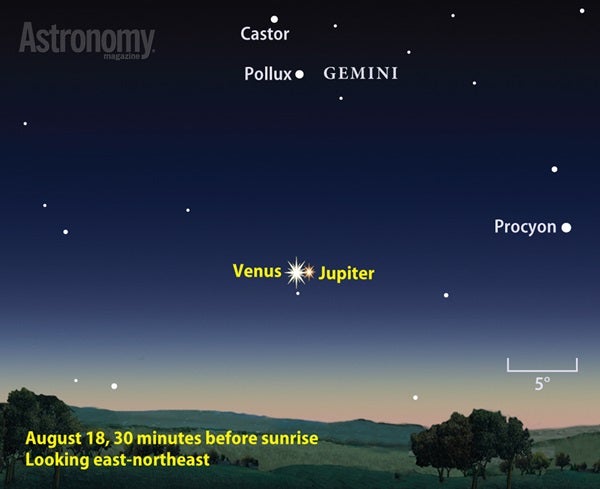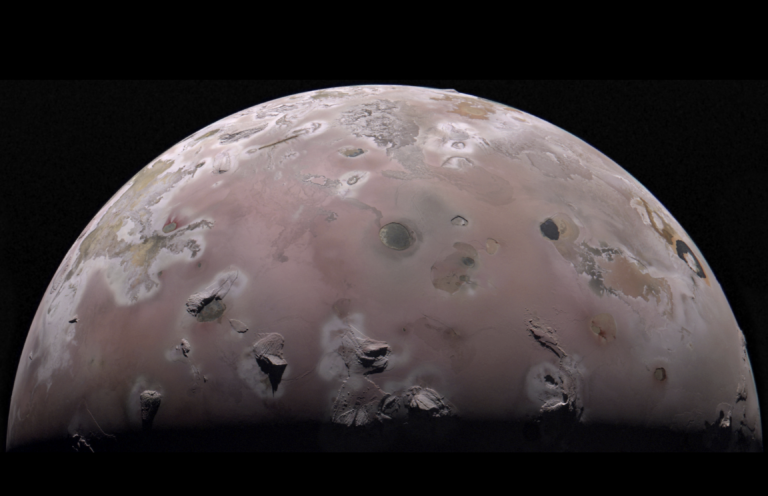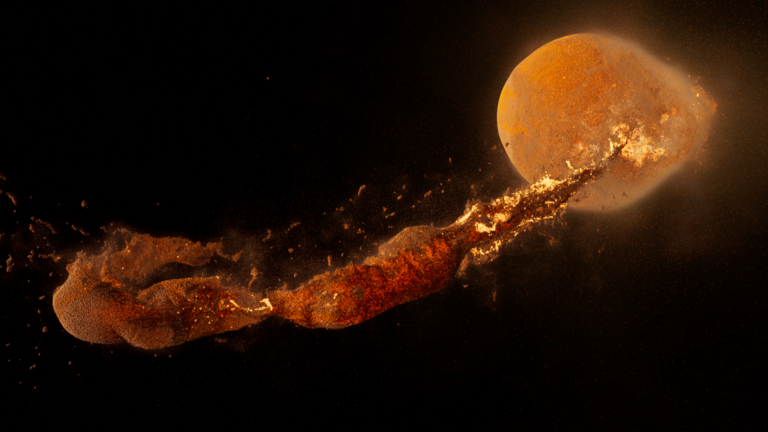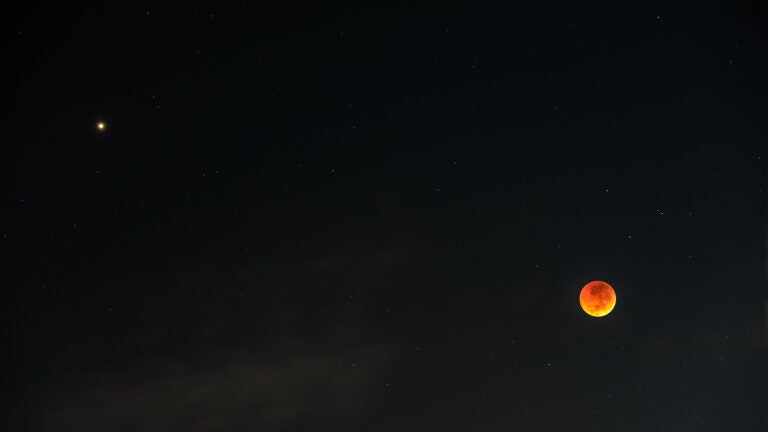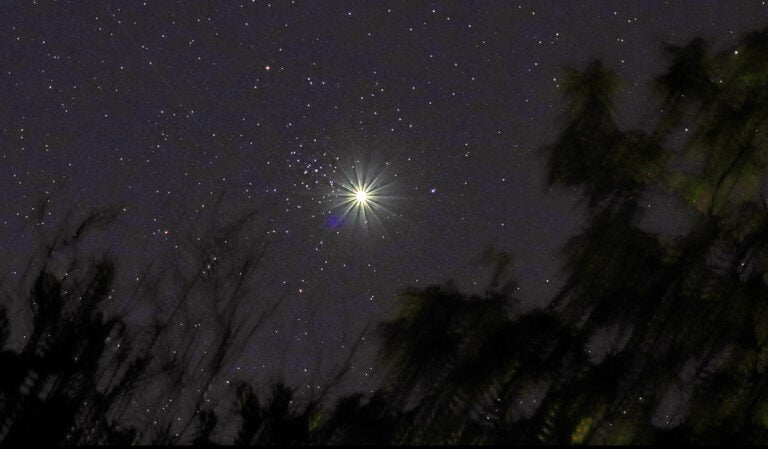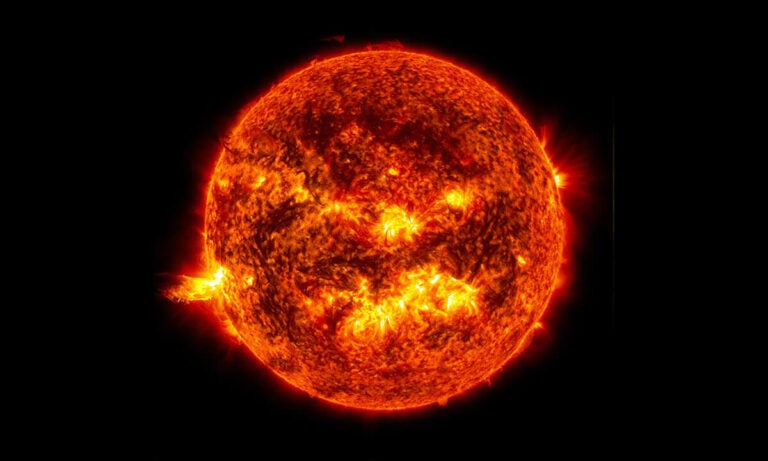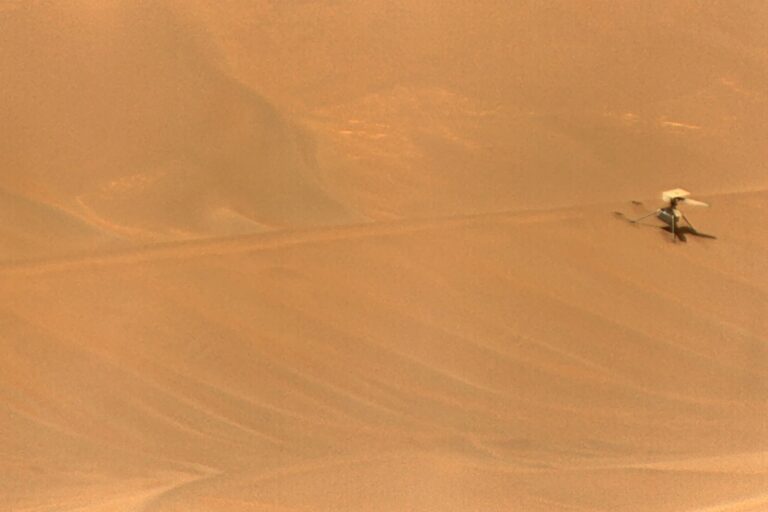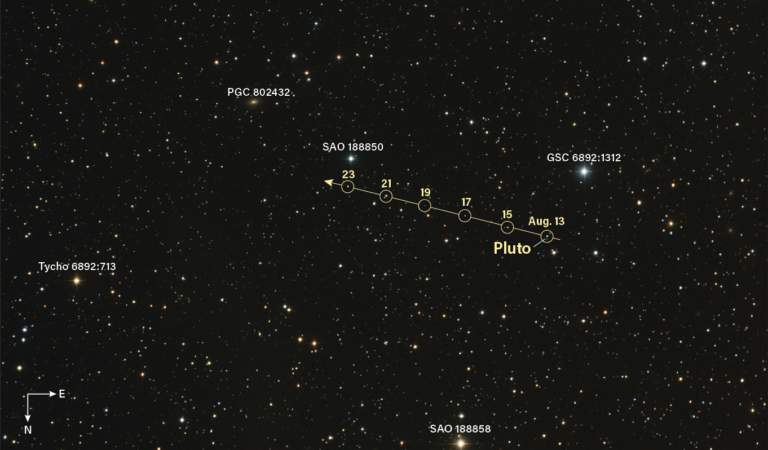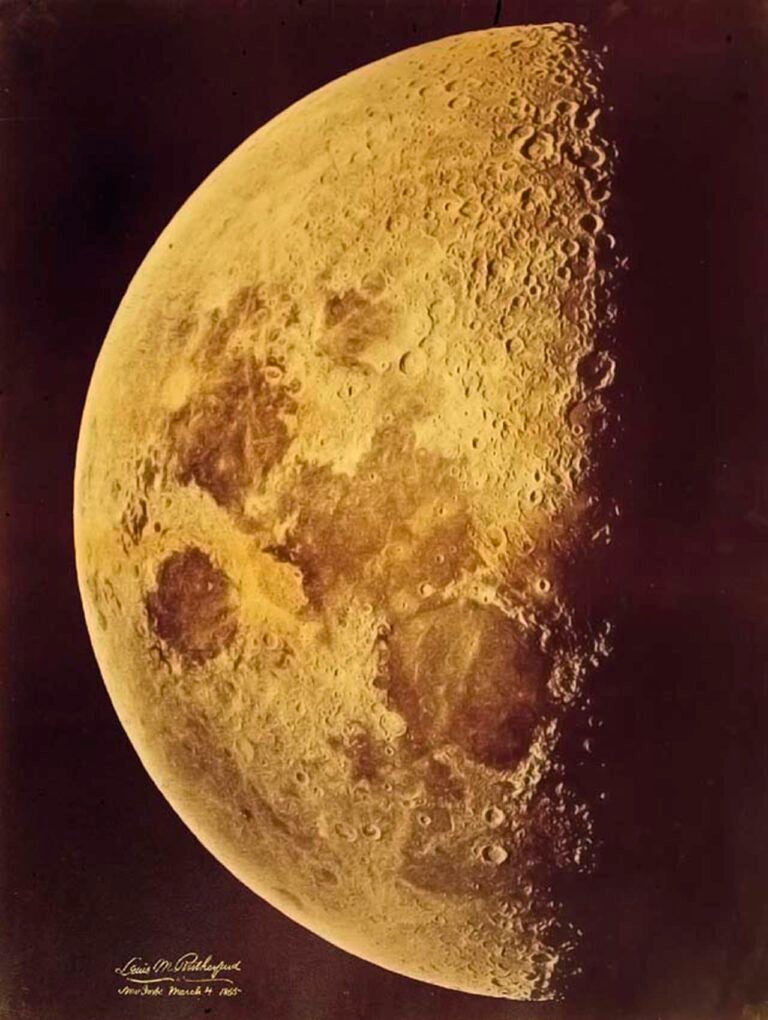On August 18, Venus and Jupiter meet in a spectacular morning conjunction (a close approach) within 1° of the Beehive star cluster (M44) in the constellation Cancer the Crab. But why wait until then to view the two brightest planets? Savor the forthcoming conjunction in the days before as Venus and Jupiter close in on each other in the east-northeastern sky. On August 12, Venus rises first, 90 minutes before sunrise, and Jupiter follows 30 minutes later. The two lie 5.8° apart.
Each following morning, Jupiter and Venus appear 1° closer. By August 17, they lie within 46′ of one another. (1′ equals 1/60 of 1°.) They’re even closer on August 18, a mere 20′ apart. At that time, the two brightest planets (Venus at magnitude –3.8 and Jupiter at magnitude –1.8) are both visible within the same low power field of view. In fact, any optics that can capture the Full Moon (31′ across) also will show both planets.
Venus lies 0.6° due south of M44. The visibility of the Beehive depends on local sky conditions and the fast-approaching dawn. The start of nautical twilight, when the Sun lies 12° below the horizon, occurs an hour before sunrise with the planetary pair and M44 a mere 5° above the east-northeastern horizon.
Conjunctions of Jupiter and Venus are fairly frequent, occurring every 13 months on average, but not all are favorable. Some occur too close to the Sun for us to see. Similar conjunctions repeat over a 24-year period.
“Close groupings of planets are great opportunities for cool-looking, easy-to-obtain sky photos,” says Astronomy Senior Editor Richard Talcott. “Just mount your camera on a tripod, take lots of shots, and keep the best one to show your friends.”
In fact, if you get an image you’re proud of, email it (with all the photographic details) to readergallery@astronomy.com. It may become the Picture of the Day on our website.
- Video: Easy-to-Find Objects in the 2014 Summer Sky, with Michael E. Bakich, senior editor
- StarDome: Locate Venus and Jupiter in your early-morning sky with our interactive star chart.
- The Sky this Week: Get your planetary info from a daily digest of celestial events coming soon to a sky near you.
- Sign up for our free weekly email newsletter.

